Construction on the attraction, finalized as Jurassic Park: The Ride, began in spring of 1995. The specs were impossible to ignore. 67,015 square feet. $80 million. Even the project code number spelled jackpot - 777. By the time ribbons were cut, the real numbers were even wilder - The Ride ended up costing between $110 and $120 million, double the budget of the blockbuster it was based on.
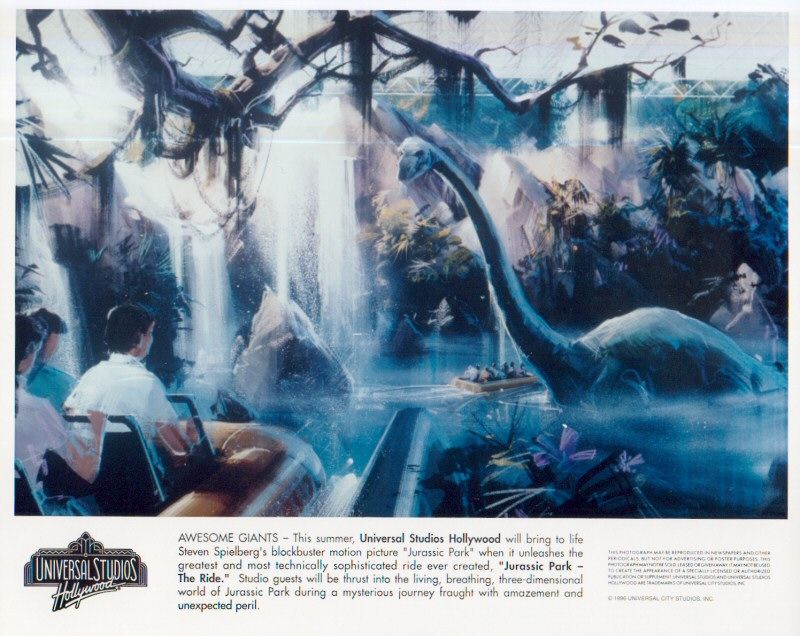
Universal admitted what it was building but offered no juicier details. The summer of ’95 belonged to another E-ticket based on a Steven Spielberg film, Indiana Jones Adventure over at Disneyland. The dinosaurs would have their day soon enough.
On June 21st, 1996, Jurassic Park: The Ride opened in high style with Steven Spielberg and Jeff Goldblum crossing torches to light a ceremonial pyre. On his first trip through the world he co-created, years after walking through Landmark’s head-level miniature, he got off before the drop. Despite a fear of heights, his review was glowing. Just like everybody else’s. Lines stretched across the Lower Lot and snaked through the famous Phantom of the Opera soundstage, 28, all for the chance to spend seven minutes among the dinosaurs.
This time, the story went, John Hammond got it right. After the mishaps on that island, he regrouped and built another Jurassic Park smack-dab in the middle of Universal Studios Hollywood. Richard Attenborough reprised the role, promising in his wistful way that nothing like that power outage could ever happen again in the “Hollywood park.”
Three months later, Spielberg, Goldblum, and Attenborough would be on set, devising further means by which something like that could happen again in The Lost World: Jurassic Park.
Minus a few of the more troublesome effects, the exact same thing would be happening not long after in Florida as the centerpiece attraction of an area now-called “Isla Nublar: Home of Jurassic Park.” The River Adventure name would finally stick, but what could possibly stand beside it?
As they always do, concepts started big. A complementary Jeep Safari was sketched up for the plot beside the River Adventure, where Skull Island: Reign of Kong looms today. The ride would’ve finally allowed guests to board those iconic Explorers (despite the name) and pass in the shadow of those iconic gates. That keyword - iconic - was the problem; all the narrative beats were so indelible that the River Adventure already used most of them. Both would’ve opened with brachiosauruses for scale and ended with T-Rexes for terror.

HelicopTours lasted longer, due in no small part to its novelty. Outwardly themed to an active helipad, the attraction would not have actually taken riders anywhere. Foreshadowing the angle and approach of Soarin’, HelicopTours employed simulator technology for an aerial tour of the island. Par for the course, the sight-seeing ended in disaster, but with Pteranodons attacking for once.
Though both plans ultimately fell off the drawing board, their memories still live on in Islands of Adventure. A scale model of Isla Nublar sits in the middle of the River Adventure’s entrance rotunda. Among the tiny red buildings and placards devoted to the attractions that did survive, weather eyes can spot placeholders for both the Jeep Safari and HelicopTours.
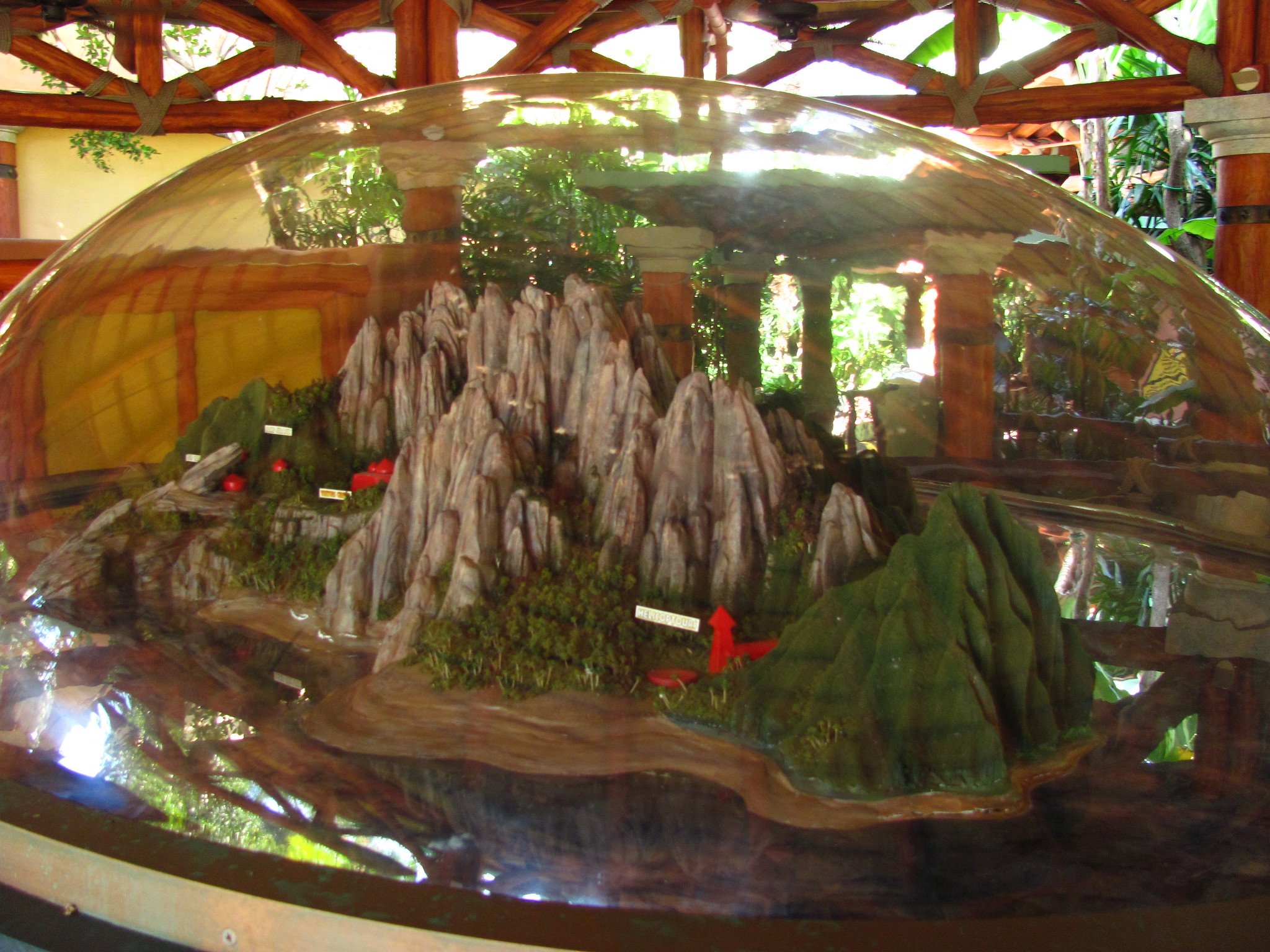
With the design as final as it’d ever be - River Adventure, Pteranodon Flyers, Triceratops Encounter, Camp Jurassic, and a Discovery Center straight out of the movie - Universal announced its line-up for Islands of Adventure on May 6th, 1997. On the 23rd, The Lost World: Jurassic Park opened wide.
It was going to be a busy year.
The dinosaurs vacated the Pantages lobby for a brand-new showroom in Stage 54, the former MCA Recording Studio. Befitting the bigger advertising push for Lost World, the picture cars became a picture fleet. Unimogs, Hummers, and Mercedes-Benzes, all olive drab and bearing the InGen logo, swarmed the alley between Alfred Hitchcock: The Art of Making Movies and Hercules and Xena: Wizards of the Screen. Inside, a span of the film’s ill-fated Mobile Lab was cut open for a closer look. That’s not counting the more extensive collection of props, costumes, and special effects demonstrations, like a water-filled footprint rigged to ripple. The triceratops from the first film returned in disguise as one of the tranquilized animals ready for export.
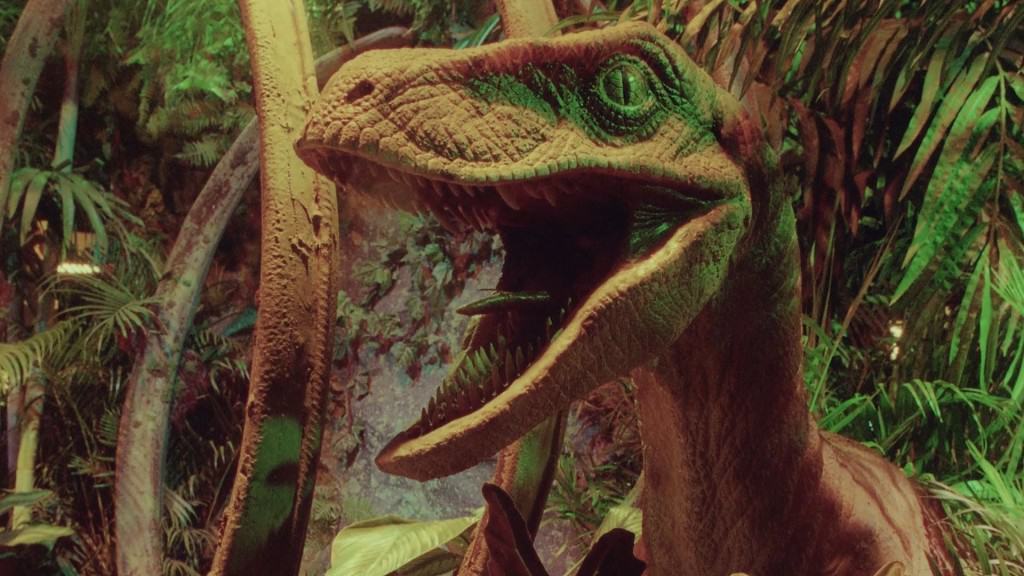
The Lost World: Behind the Screams was a hot enough ticket to make the front of the park map that summer, but it wasn’t the only Jurassic Park entertainment within walking distance.
The Islands of Adventure Preview Center claimed the corner of New York formerly occupied by Screen Test Home Video Adventure and presented the future. Each land received its own immersive room designed for one thing and one thing only - hype. The Jurassic Park room began, appropriately enough, with the gates. Beyond them, dinosaur eggs incubated behind glass within reaching distance of attached gloves. A steel roll-down door separated guests from the Raptor Pit, sturdy enough to hold the predators in but not so strong they couldn’t rattle it once in a while. A video loop hosted by Mr. DNA provided a “Jurassic Park Special Update” on the coming attractions. The latest, greatest concept renderings hung in the Jurassic Gallery, a hallway capped by tropical canopy. Stop to admire in the wrong place, though, and a hidden T-Rex growled from above.
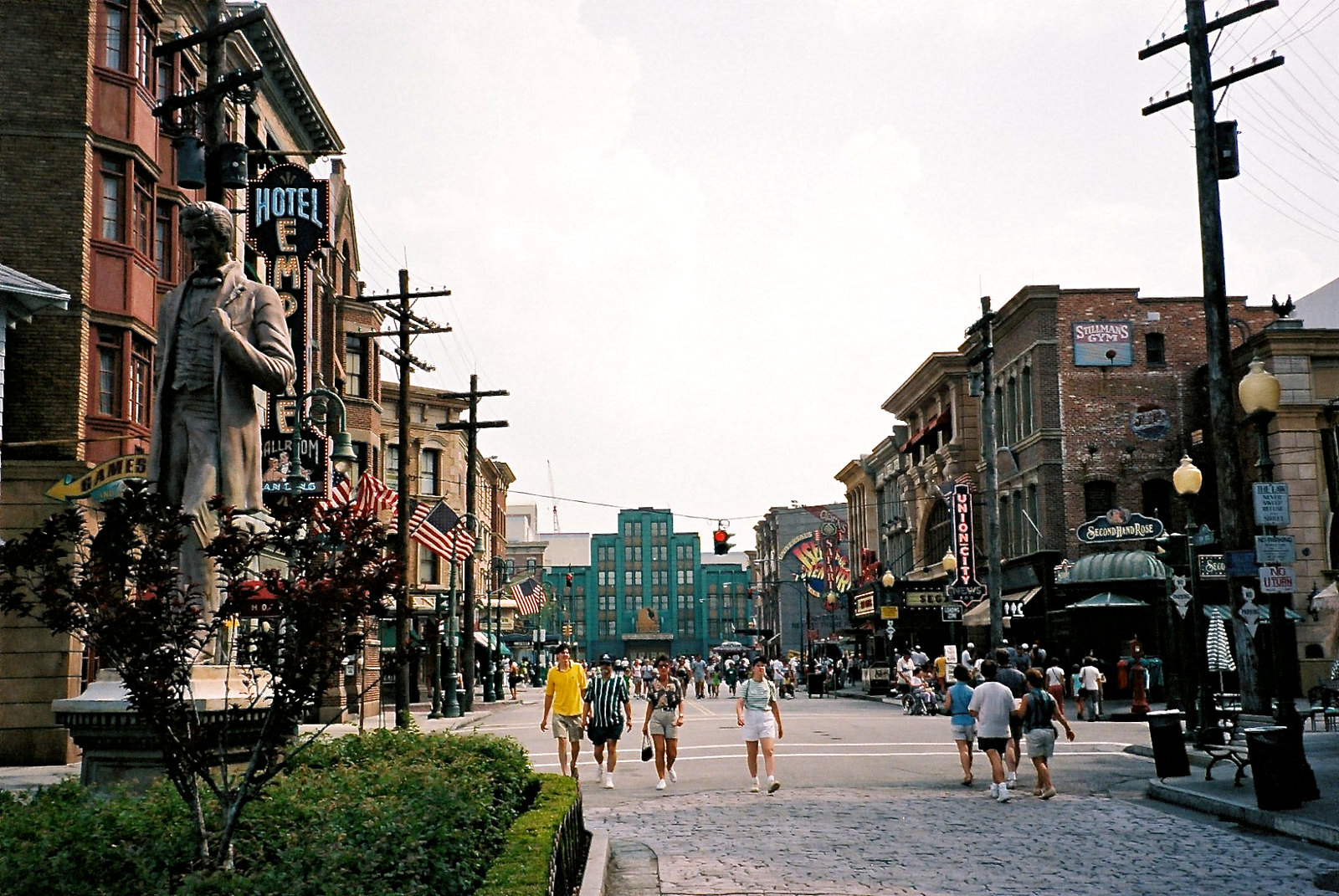
Behind the Screams didn’t last the year, but the Preview Center and T-Rex Attack! kept the park prehistoric until Islands of Adventure was ready. Not that anyone needed a vacation to notice it was coming.
The T-Rex quickly became a b-roll staple of Universal Orlando advertising. Triceratops Encounter earned its own ad spot in the “Universal Studios Escape” campaign. Jurassic Park was already an unofficial part of the resort. That T-Rex was already stomping its way onto logo tees. But soon the franchise would transcend the novels and the VHS tapes and even the boat ride.
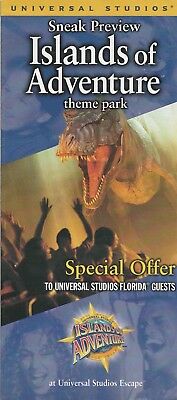
Soon it would actually exist.
On May 28th, 1999, Islands of Adventure finally opened.
Jurassic Park finally worked. The Discovery Center replicated the original sets down to the Barbasol can. The towering skeletons in the atrium weren’t even copied, but borrowed - their spines still hide the eyebolts that suspended them on-set. New dinosaurs were born hourly and if a guest didn’t buy that, they could go pet an ailing triceratops next door. Hammond still introduced the River Adventure, but without mention of Hollywood or California. This was it. This was the dream come true, at least in the lore.
Attendance didn’t meet expectations for the new park. Before long, Universal started weighing salvage operations. In the case of Jurassic Park, that meant a thrill ride. That meant a roller coaster.
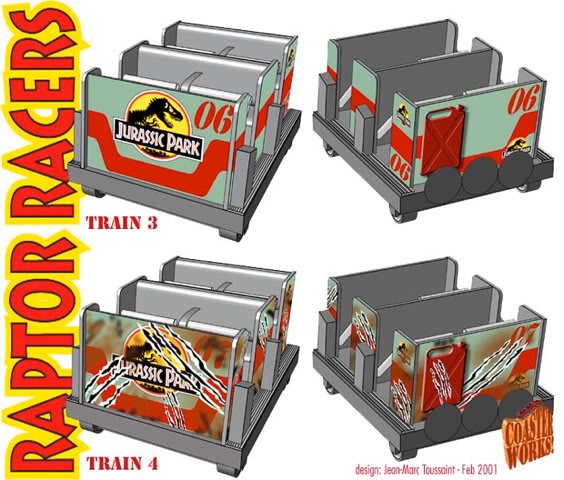
The first attempt, in early 2001, was called Raptor Racers, a woodie themed around outrunning the island’s most dangerous inhabitants. All that’s left of this pitch is artwork showing trains painted like the two famous vehicles from the original film. Later that year, another design made it farther along. The current Skull Island area could’ve been home to Universal’s first hypercoaster, tangled through a heavily themed amber mine.
Around the same time, on July 18th, Jurassic Park III released to respectable box office and disappointing reviews. There was little confetti spilled for the sequel around Islands of Adventure, though the Hollywood ride did add 240,000 gallons of water for a Summer Splash promotion. Times had changed, as a single commercial made clear.
See The Movie dared the first half, dazzling with highlights like the Spinosaurus doing its best Jaws impression. Then Live The Adventure sold the second, dazzling with different highlights. Cascading waterfalls over Camp Jurassic. Pouncing spitters on the River Adventure. Hatching velociraptors in the Nursery. “Explore the real Jurassic Park, only at Universal’s Islands of Adventure.”
Fact superseded fiction.
Michael Crichton was right.
It took a theme park to bring something like Jurassic Park to life.
And for 22 years, not much changed. Triceratops Encounter closed, reopened as Triceratops Discovery Trail, then closed again. Somewhere in the middle, the queue was used for a Jurassic Park-themed Halloween Horror Nights maze, featuring a cameo from the decapitated head of the first film’s trike. Harry Potter took the HelicopTours plot and King Kong took the Jeep Safari. The raptors got tame enough to pose for pictures. One of them was even the star of a new Jurassic motion picture.
Velocicoaster marks the first major Jurassic World addition to Islands of Adventure. It queues behind the Discovery Center and empties almost directly into it. The interior, plus or minus some souvenir stands, remains as it did in Jurassic Park.
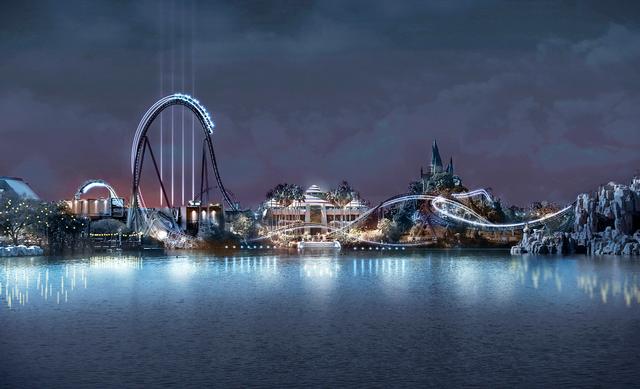
The franchise is forever entwined with Universal theme park history, especially in Florida. Just as Back to the Future pulled the original park from the brink, Jurassic Park guaranteed the success of the resort. If Crichton never asked the question, there would be no Islands of Adventure and, at least in any recognizable state, no Universal Orlando. As the films find new audiences, the attractions age further into inspiration, no longer the belated spin-off but the genuine source.
Almost 30 years later, Jurassic Park remains both the perfect showcase for the magic of movies and the magic of theme parks. It was, is, and forever shall be the ultimate Universal Studios attraction.
As rumors fly about the River Adventure going the way of The Ride and getting a rebooted makeover, it’s easy to get defensive or, worse, nostalgic. But adaptation is only natural.
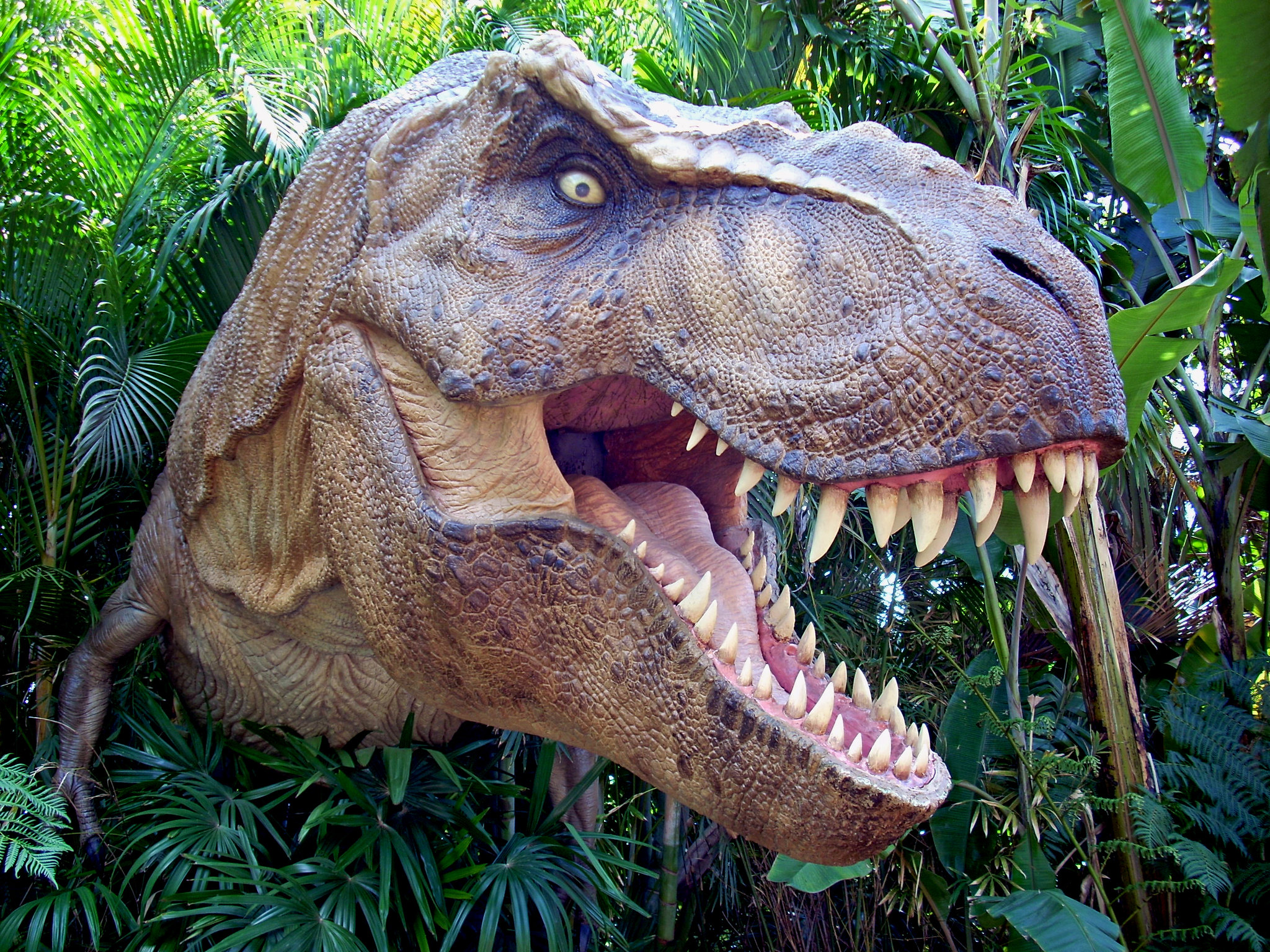
Consider the fiberglass T-Rex in the trees beside the Burger Digs, menacing either Explorer #05 or Jeep #12, since repainted as #23. It’s the same animal that posed for photos so long ago in an unnaturally lush corner of The Boneyard. Still smiling. Still surviving.
Life, like novelists, filmmakers, and savvy theme park designers, finds a way.

Add new comment